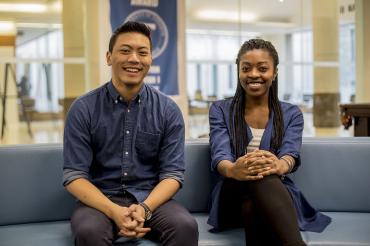U of T launches Black Student Application Program to strengthen diversity in medical school

Published: March 8, 2017
The University of Toronto is launching the first program of its kind in Canada to encourage more applications from black students. The Black Student Application Program (BSAP) will be in place for the 2017-2018 MD program admissions cycle.
“The current MD program student population reflects the fact that we aren't attracting many students from the black community. We want to change that,” says Dr. Patricia Houston, vice dean, MD program for U of T's Faculty of Medicine.
The black population in the GTA makes up approximately 8.5 per cent of the population, according to the 2011 census, yet it's a community that's under-represented in medical school.
Read more at CTV News
“By implementing BSAP, we hope to break down some of the barriers that might impede black students from applying and nurture an inclusive environment that is welcoming to all,” says Dr. Lisa Robinson, chief diversity officer in Medicine. “Studies show that increased diversity of medical students provides students with unique learning opportunities and ultimately leads to better physicians with a greater ability and understanding of diverse communities.”
U of T medical students train in a large network of academic and community-based hospitals, and health-care sites, which ensures that they are exposed to an extremely diverse patient population.
“We are fortunate enough to live in one of the world’s most multi-cultural cities – we need to be prepared to care for the diverse population we’ll be serving as future physicians,” says Yezarni Wynn, first year medical student and class co-president.
“Each medical student brings a wealth of different experiences with them to the class,” says Chika Oriuwa, a first year medical student. “We are constantly learning from each other – especially through small group learning activities. Having a medical school class that is diverse in many different ways introduces a dialogue that has the potential to shape the way we approach medicine.”
Research shows that a more diverse physician workforce improves access to care for underserved communities and provides better health care to all patients, including minority communities that face unique health challenges.
“Caring about a patient holistically means understanding how culture can impact health,” states Robinson. “We are not sacrificing excellence to achieve diversity. We are embracing diversity to achieve excellence.”
How it works:
- BSAP is an optional application stream for black applicants who self-identify as Black African, Black Caribbean, Black North American, multi-racial students who have and identify with their black ancestry, etc.
- Applicants must meet the same admissions requirements (MCAT, GPA and course prerequisites) as applicants through the general application stream
- There will be no quota for the number of students admitted through BSAP
- Applicants will be required to include an essay that is BSAP specific as part of their non-academic requirements
- Applicant file review and interviews will include black physicians and/or community members
- The MD program Black Canadian Admissions Subcommittee (BCAS reporting to the Admissions Committee) will have oversight of the process
“There is no single solution to fixing the problem of the under-representation of different racial and ethnic groups in medicine,” says Dr. Trevor Young, dean of the Faculty of Medicine. “We also don’t think our only challenge is to address the under-representation of black and Indigenous students in our program. Ensuring equity in medicine is a complex and long-term effort.”
BSAP is one component of the Faculty of Medicine’s broader strategy to increase the number of black medical students attending the MD program. Other initiatives include the summer mentorship program and community of support, a collaborative initiative that provides students with black or Indigenous ancestry, as well as students that face economic disadvantage, with access to mentors, job-shadowing, volunteer and research opportunities, medical-school admission information and guidance. This highly successful initiative has seen steady growth in membership since its launch in 2015.
“Our goal is to create a supportive community for black students that extends beyond the application process,” says Houston. “And fostering a sense of community is essential to the success of our students.”
Once accepted, students will be supported through the Office of Health Professions Student Affairs and through the recently created position of MD Program Black Health Theme Lead, which focuses on incorporating Black Canadian health issues into the medical curriculum for the entire medical class. The emphasis will be on offering mentorship opportunities and increased visibility of black physician role models. Medicine will offer continued support for student clubs and associations that promote a sense of community for black students, including the U of T Black Medical Students Association.
BSAP was developed in consultation with students, faculty, staff, members of the black community and black medical professionals.



